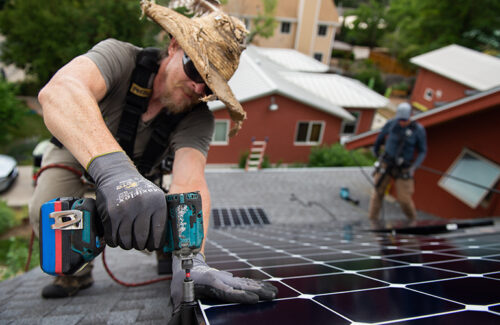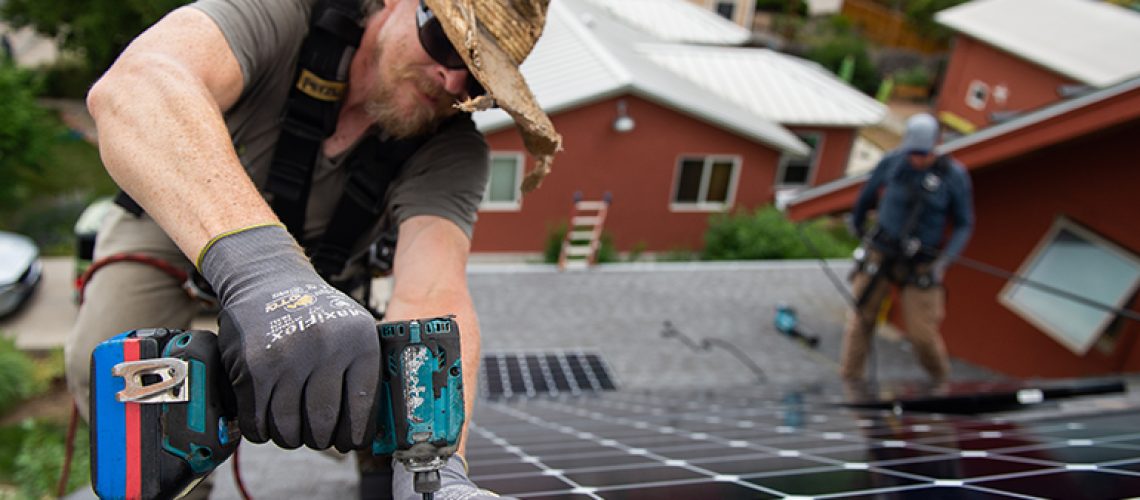
Namaste Solar
Amid the changes to net energy metering in California that go into effect starting on April 15, and the surge in consumers across the state adopting rooftop solar, California’s solar and storage industry is sharing tips and best practices for consumers considering going solar.
Across the state, there are over 1.5 million solar systems installed at schools, farms, businesses and churches, with 42% of the market being concentrated in working-class and middle-class neighborhoods. As a key driver of savings for California consumers of all types, rooftop solar and storage systems continue to be a wise investment for consumers to save on their energy bills while accessing clean, affordable and reliable energy.
“Going solar is one of the best ways to improve your home, save money, and protect against rising energy costs but like any major home improvement project, the best consumer is the informed consumer,” said CALSSA executive director Bernadette Del Chiaro. “There are advantages to going solar sooner than later, but investing in solar is going to be a wise decision for most consumers today as well as tomorrow so don’t skip important steps in the buying process.”
CALSSA compiled a few tips for being a smart solar consumer.
- Get three bids from a properly licensed solar contractor, preferably one who’s a member of a trade association like CALSSA. Useful links: https://calssa.org/member-directory or https://www.cslb.ca.gov/OnlineServices/CheckLicenseII/CheckLicense.aspx
- The cutoff for net metering in California’s investor owned utility territories is April 14, 2023. Consumers who live in PG&E, SCE or SDG&E territories and who submit a complete interconnection application to their utility before the cutoff date can be eligible for net metering. After that date, consumers are eligible for the new program called net billing. Net billing still affords savings for consumers who go solar but the payback periods — the length of time it takes for your solar investment to pay for itself through monthly utility bill savings — will take more time. Consumers who live in a municipal utility territory may or may not be eligible for net metering, depending on local policies.
- Consider adding battery energy storage to your solar system. A battery can protect your solar investment while also giving you emergency backup power during grid outages.
- Make sure you are aware of the federal solar investment tax” credit (ITC) and how you can take advantage of it. The tax credit is worth 30% of the final cost of the solar system, which is an incentive that will be around for consumers for the next 10 years. If your solar system costs $30,000, you may be eligible to deduct $9,000 off of what you owe in federal taxes. However, the ITC can only benefit you if you owe federal income taxes.
- Any contract you sign should include the system size (measured in kilowatts, kW), the final installed cost and warranty information. It should also include the license numbers of the contractor and the home improvement sales agent who sold you the solar system. The contract should be in the same language as the sales conversation. Do not sign a contract that is missing these important pieces of information.
- Pay as you go. Don’t make more than a $1,000 down payment upon signing a contract. There are also a lot of options for financing your solar system or signing up for a power purchase agreement that don’t require large up-front investments.
- If the deal seems too good to be true, it probably is. For example, no government agency will write you a check if you go solar. You can save money by going solar, but you cannot make money. Also, there is no such thing as a “zero utility bill.” Most electric bills in California contain monthly charges. These are required with or without solar. Finally, adding solar to your home does not mean you can use as much electricity as you’d like. If you significantly increase your electricity usage after going solar, outpacing the size of your solar system, your electric bill will increase.
- Buyer’s remorse? California gives you three days to change your mind or five days if you’re 65 or older. Instructions on how to cancel must be included in your contract.
For more information about frequently asked questions about rooftop solar, visit calssa.org. CALSSA representatives are available for interviews to discuss the impact of recent solar rate changes and best practices for consumers considering going solar.
News item from CALSSA



